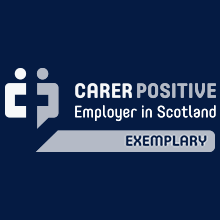Incidental findings on brain and spine imaging
We are often asked in Neurology about incidental findings on brain imaging – both MRI and CT. These are typically found when the person has been scanned for another reason, for example headache or hearing loss. To help advise primary care and the public, this factsheet gives some information about how common these are in the normal population and when we may need to see patients with them. Refs12
| Finding | Prevalence in Population | Estimated Number of People in UK | When to Leave It | When to Refer | Who to refer to if indicated |
| Pineal Cyst | 2.5–4.9% | 1.5–3.5 million | Stable, <10 mm, asymptomatic | If >10 mm, atypical appearance, hydrocephalus or brainstem symptoms or signs | NEUROSURGERY |
| Empty Sella | ~11% | 7.5 million | No papilloedema – review at local optometrist if unsure No endocrine symptoms. | If papilloedema (confirmed by local optometrist) and no other clinical features | OPHTHALMOLOGY |
| If pituitary dysfunction suspected, consider pituitary function testing | ENDOCRINOLOGY. | ||||
| Chiari Malformation Type I | 0.5–3.5% (depending on how defined) | 300,000–2.5 million | Asymptomatic, no syrinx, no neurological symptoms. <3mm normal. | If brainstem symptoms or signs, syrinx, or obstructive hydrocephalus . >10mm descent is more associated with symptoms. Cough headache (ask for advice) | NEUROSURGERY |
| Arachnoid Cyst | ~0.2–1.2% | 136,000–816,000 | Asymptomatic, typical imaging appearance, no mass effect | If large or causing mass effect (exceptionally rare in adults) | NEUROSURGERY |
| Developmental Venous Anomaly | 2-3% | 1.2-1.8 million | Nearly always. | If there is some associated additional vascular abnormality like a cavernoma or other radiological abnormality | NEUROSURGERY |
| Frontal lobe volume loss | Not known | Not known | Often just a consequence of dehydration on day of imaging | If cognitive decline, rapid progression, focal neurological symptoms or signs or disproportionate to age | NEUROLOGY |
| Generalised Cerebral Atrophy | Common with age, >30% in elderly | 10–20 million (mostly elderly) | Asymptomatic or if age-appropriate | If cognitive decline, rapid progression, focal neurological symptoms or signs or disproportionate to age | NEUROLOGY |
| White Matter High Signal | 10–20% (age ≥50) | 6–12 million (mostly ≥50). Rising with age | Asymptomatic. Incidental, small, punctate. More common with MigraineVascular risk factorsPremature birth | If cognitive decline, gait disturbance, confluent lesions, or atypical appearance. Note: overseas radiologists commonly report scans as more abnormal than UK neuroradiologists | NEUROLOGY |
2 Jenkinson MD, Mills S, Mallucci CL, Santarius T. Management of pineal and colloid cysts. Pract Neurol 2021; 21: 292–9.
Jon Stone, Shona Scott, Richard Davenport, Consultant Neurologists, NHS Lothian, July 2025













